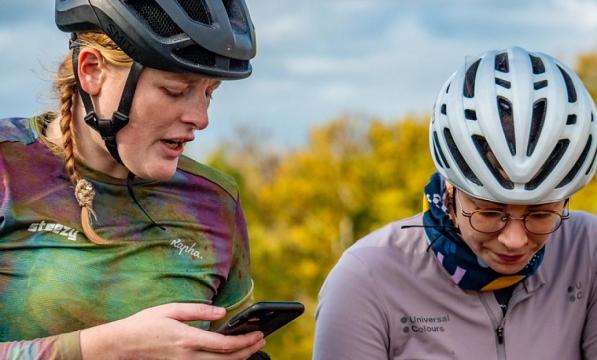What to do if there’s a crash or other incident on a group ride

Fortunately, cycling crashes or incidents don’t happen that often. But however careful you are, and however experienced your group, they can occur. The ride leader has a duty of care to all others on the ride, so it’s a good idea to know what to do if an incident does occur.
Emergency procedures
In the first instance, follow the procedures outlined in the sidebar on the right if an incident involving serious injury or death occurs.
Then read on for any further actions you should take, depending on the circumstances. See also the flowchart below for accessing legal and claims support.
Other road users
If a rider or riders are involved in a collision or near miss with a pedestrian or other road user not on the organised ride, please follow the advice in What to do if you have a cycling crash?
Our Incident Line, which is operated by our partners at Cycle SOS, offers a bespoke service to all full Cycling UK members following a cycle-related incident.
The ride leader, who has duty of care for everyone on the ride, should complete an accident/incident form at the first opportunity and submit it to Cycling UK.
Single rider
If a rider comes off because of a pothole or other road defect, again follow the advice in What to do if you have a cycling crash? They might be able to claim for any damage or injury caused to them and their equipment from anyone who is deemed responsible.
Cycling UK members benefit from free legal advice provided by Cycle SOS in relation to cycling accidents, crashes and incidents.
If somebody falls off in a solo crash with an animal, please follow the advice of our consultant solicitor.
If the rider is not seriously injured, check their bike carefully for damage. Check the frame for damage, straighten the handlebars, check the saddle, and make sure the brakes are in good working order, before allowing them to continue, if they wish.
If they do not need emergency services, and don’t wish to continue, ensure they can get home alone or can arrange a lift. If possible, somebody should stay with them in case of delayed shock or other reaction.
If they have suffered a blow to the head, they should seek qualified medical advice as soon as possible.
Again, the ride leader should complete an accident/incident form as soon as possible.

Two or more riders
Things can get more complicated if two or more riders collide or one causes others to crash, as here the question of liability is raised. Again, refer to the advice in What to do if you have a cycling crash?
If any of the riders are members of Cycling UK, they are covered for up to £10m against claims for any injury or damage caused by their negligence by our third-party insurance. Up to 10 non-members or ‘guest’ riders with Cycling UK member (not affiliate) groups are also covered for any damage or injury caused to other people for the duration of the ride only and up to a limit of three rides per guest rider.
Registered volunteer marshals, event organisers, ride leaders and assistant ride leaders with Cycling UK affiliate or member group are also covered for incidents that may be attributed to their negligence. See our insurance information and third party FAQs for more.
If an incident takes place, call Butterworth Spengler, our insurance brokers, directly on 0151 494 4400 for a third party claim form as soon as possible. They will help identify if a claim is likely and send you a form to complete.
As always, the ride leader must also complete an accident/incident form as soon as possible.
The ride leader
If the ride leader is one of the injured parties, an assistant ride leader or other responsible person can complete the accident/incident form their behalf.
If the leader feels unable to continue leading the ride, they can ask if somebody else feels able to do so. This person should be registered as a ride leader; if they are not already, as soon as possible after the ride so they are in turn covered should anything else happen.
In the event of a serious incident, it may be better to abandon the ride altogether – but make sure everybody is able to get home or back to the original meeting point before you do so.
Safeguarding
If the incident involves under 18s or adults at risk, and you believe it may be a safeguarding incident, alert your safeguarding officer and follow the procedures set out in our safeguarding policies.
Use the safeguarding report form appropriate to the age of the person involved.
Other incidents
Occasionally there may be episodes on a ride which don’t fit any of the above categories, such as disagreements between riders or with the ride leader. In this situation, use the guidance in the safeguarding officer’s toolkit to try to resolve the issues.
If a rider is behaving in a way that is a danger to themselves or others, the ride leader is entitled to ask them to leave the ride. Complete an accident/incident form at the first opportunity.
If members have witnessed a traumatic event either involving a member of their group or members of the public on a group ride, you may wish to point them towards counselling services available. Mental health charity Mind has details of how to access these.
Other resources
Cycling UK provides a wide range of resources for cycling groups, including toolkits for volunteer ride leaders, event organisers and other roles within a cycling club.
We are also currently offering an online training course for ride leaders from our member groups.





